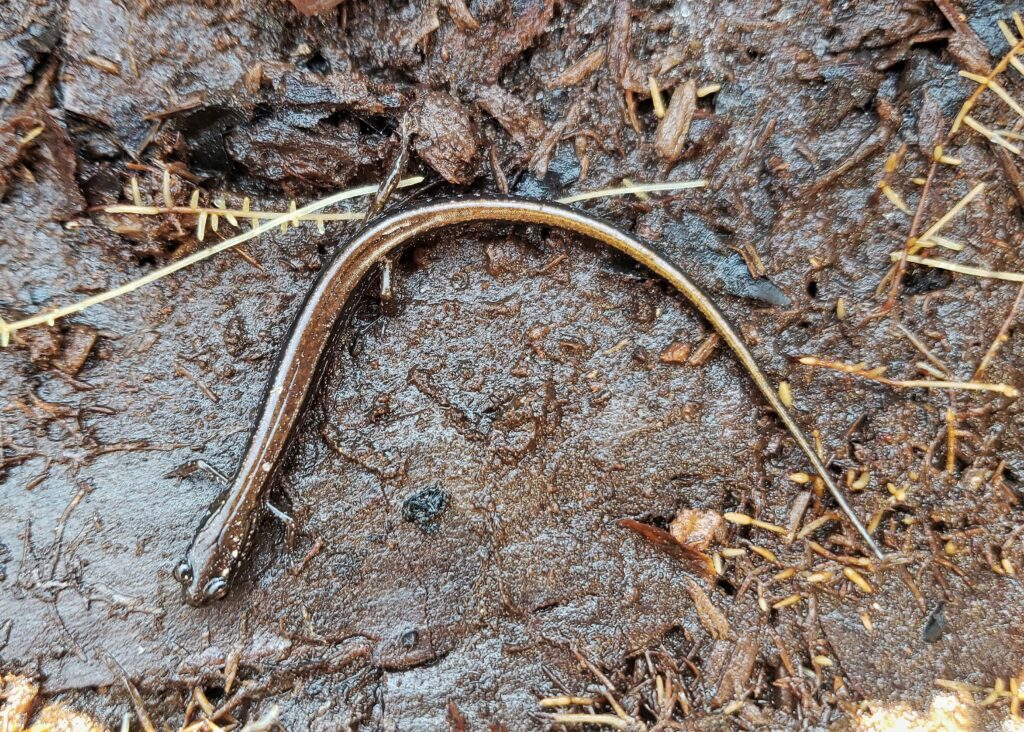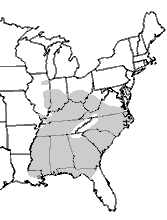Southern Two-lined Salamander (Eurycea cirrigera)



Photos by Amanda Hurst unless otherwise noted
| Description: Two-Lined Salamanders are fairly small salamanders, ranging from 2.5-3.75 in (6.4-9.5 cm). They are tan to light yellow with two black longitudinal stripes running from the eyes onto the tail. Dorsum is flecked with black spots. They have a narrow body and 14 costal grooves between adpressed limbs. Males have cirri, which are small downward projections from the nostrils that are thought to play are role in chemoreception. Males may also be identified by a swollen cloaca.
Range and Habitat: Southern Two-Lined Salamanders are found throughout the Southeast, except for peninsular Florida. They are found throughout Georgia and South Carolina and are favor flowing creeks and streams. Larvae are aquatic, and adults are also found in or around water. Habits: E. cirrigera is one of the more aquatic plethodontid salamanders in Georgia. Those that live in streams occupy shallow areas where woody debris and cobble are present to provide cover. When the salamanders breed, the female uses these substrates as sites of attachment for her eggs. The eggs hatch and complete metamorphosis within one to three years. Because this salamander prefers shallow areas with cobble and wood substrate, human activities that increase sedimentation in streams may reduce habitat availability for this species. Conservation Status: These salamanders are considered common and are not protected in our region. Pertinent References: Smith, S. and G.D. Grossman. Stream microhabitat use by larval southern two-lined salamanders (Eurycea cirrigera) in the Georgia piedmont. Copeia (3):531-543. Willson, J. D. and M. E. Dorcas. 2003. Effects of habitat disturbance on stream salamanders: implications for buffer zones and watershed management. Conservation Biology 17:763-771. Account Author: Emily Rogers, University of Georgia – edited by J.D. Willson |
